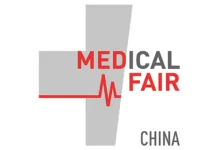Data Breach to Doorstep: The Human Cost of Healthcare Leadership Visibility
The growing public visibility of healthcare leaders brings recognition—and risk. In an era where digital footprints persist indefinitely and data breaches occur with alarming frequency, the line between professional prominence and personal vulnerability has blurred dangerously for those who lead healthcare organizations.
When Visibility Becomes Vulnerability
Healthcare leadership has undergone a fundamental transformation in its relationship with public visibility. Hospital executives, health system CEOs, and senior administrators increasingly find themselves thrust into public discourse around healthcare costs, access, quality, and equity. This visibility serves important purposes—fostering accountability, building community trust, and establishing institutional credibility. However, it simultaneously creates exposure that malicious actors can exploit for financial gain, ideological purposes, or personal grievance.
The concept of healthcare leadership privacy risks encompasses far more than traditional concerns about competitive intelligence or corporate espionage. Today’s threats manifest across a spectrum ranging from cyber harassment and doxxing to physical stalking and targeted violence. The December 2024 tragedy involving a healthcare executive crystallized what security professionals had warned about for years: the convergence of public frustration with healthcare systems, readily available personal information, and individual grievance can create deadly consequences.
Understanding this vulnerability requires examining how digital information exposure translates into real-world risk. Every LinkedIn post, conference presentation, media interview, and community engagement creates data points that accumulate into comprehensive profiles. Data brokers aggregate this information with public records, social media activity, property ownership details, and countless other sources to create detailed dossiers available to anyone willing to pay modest fees. For healthcare leaders making difficult decisions about care access, coverage policies, or resource allocation, this exposure creates genuine personal danger.
The Digital Footprint of Healthcare Leadership
Healthcare executives generate substantial digital footprints through both professional obligations and personal activities. Professional visibility includes regulatory filings, industry publications, conference presentations, media interviews, and organizational communications. These professional activities serve legitimate purposes and often represent non-negotiable aspects of executive responsibilities. Yet each instance of professional visibility contributes to a growing repository of information that defines executives’ public personas.
Social media presence creates particularly complex challenges for healthcare leaders. Professional networking platforms like LinkedIn facilitate industry connections and thought leadership while simultaneously broadcasting career histories, educational backgrounds, professional networks, and expertise areas. Twitter, Facebook, and Instagram extend executives’ reach into public discourse while revealing personal interests, family connections, and lifestyle details that attackers can weaponize.
The permanence of digital information amplifies these concerns significantly. Content published years ago remains accessible through internet archives and data broker databases long after executives believe it has been removed or forgotten. Comments on blog posts, participation in online forums, and even deleted social media content can resurface when adversaries conduct comprehensive background research. This digital permanence means that information shared during earlier, less security-conscious periods continues creating vulnerability indefinitely.
Professional accomplishments and recognition, while valuable for career development and institutional credibility, contribute to executive exposure. Industry awards, speaking engagements, board appointments, and publications all enhance professional standing while increasing visibility to potential threats. Healthcare leaders must navigate the tension between maintaining the professional profile necessary for effective leadership and limiting the exposure that enables targeting.
From Data Breach to Personal Threat
The pathway from digital exposure to personal threat follows predictable patterns that security professionals track carefully. Initial reconnaissance typically involves gathering publicly available information from professional profiles, news articles, social media, and data broker websites. Attackers compile comprehensive dossiers including home addresses, family member names, vehicle registrations, travel patterns, and financial information.
Data breaches affecting healthcare organizations or associated service providers can expose executive information stored in corporate systems. Email addresses, phone numbers, internal communications, and system access credentials obtained through breaches provide attackers with additional tools for social engineering or direct system access. The healthcare sector’s status as the most breached industry creates ongoing exposure for executives whose information resides in multiple vulnerable databases.
Social engineering attacks represent the most common exploitation of exposed executive information. Attackers use detailed knowledge about executives’ professional responsibilities, personal interests, and social connections to craft convincing phishing emails, phone calls, or text messages. These personalized attacks achieve much higher success rates than generic phishing campaigns because they incorporate authentic details that overcome recipients’ natural skepticism.
Physical threats emerge when digital information exposure combines with grievance, ideology, or criminal intent. Home addresses obtained from property records or data brokers enable stalking, harassment, or worse. Daily routine patterns gleaned from social media posts or predictable professional schedules create opportunities for targeted approaches. Family member information allows threats to extend beyond the executive to encompass loved ones, creating psychological pressure and genuine danger.
Real-World Consequences of Information Exposure
The consequences of healthcare leadership privacy risks manifest in multiple dimensions affecting executives, their families, and their organizations. Psychological impact often precedes any physical threat, as executives become aware that their personal information circulates publicly and that they may be targets of hostile attention. This awareness creates stress, anxiety, and hypervigilance that detracts from professional focus and personal wellbeing.
Family disruption represents one of the most profound impacts of executive exposure. Spouses and children did not choose public visibility but inherit the vulnerabilities created by executives’ professional positions. Children may face bullying or harassment related to parental roles in controversial healthcare decisions. Families may need to relocate, change daily routines, or accept intrusive security measures to maintain safety. These disruptions strain family relationships and create resentment that complicates already demanding executive lives.
Career implications extend beyond immediate security concerns to affect professional opportunities and organizational effectiveness. Executives preoccupied with personal security threats cannot devote full attention to strategic leadership responsibilities. Fear of public exposure may cause leaders to avoid necessary but controversial decisions, impairing organizational governance. Talented individuals may decline executive opportunities or leave leadership roles due to security concerns, depriving healthcare organizations of capable leaders.
Financial costs accumulate through multiple channels including personal security services, home security upgrades, legal fees for addressing harassment or threats, relocation expenses, and lost productivity. Organizations increasingly recognize these costs as institutional responsibilities, implementing executive protection programs and reimbursing security-related expenses. However, significant financial burden often falls on executives personally, particularly for measures extending to family members or residences.
Media Visibility and the Privacy Paradox
Healthcare executives face a paradoxical relationship with media visibility. Organizational leadership often requires media engagement to communicate institutional messages, respond to crises, advocate for healthcare policy, and maintain community relationships. This necessary visibility creates precisely the exposure that enables privacy violations and security threats. Navigating this paradox demands sophisticated media strategies that balance communication imperatives with security considerations.
Media training for healthcare executives must incorporate security awareness alongside traditional communication skills. Leaders should understand how media appearances create information that persists indefinitely and contributes to their digital footprints. They should learn to communicate effectively while limiting personal details that could enable threats. This training should address both traditional media interviews and emerging formats including podcasts, webinars, and social media engagement.
Crisis communications present particularly acute challenges where media visibility and personal security intersect. When healthcare organizations face controversies, executives become focal points for public frustration and media scrutiny. Crisis situations demand visible leadership and transparent communication while simultaneously creating elevated threat environments. Security protocols should escalate during crisis periods, with enhanced monitoring for threats and increased protective measures.
Proactive reputation management can mitigate some risks associated with media visibility. By maintaining control over their professional narratives through strategic communications, executives can shape public perception and reduce opportunities for misrepresentation or inflammatory coverage. However, reputation management must be balanced against privacy protection, as excessive personal disclosure creates additional vulnerability.
Social Media: Double-Edged Sword for Healthcare Leaders
Social media platforms offer healthcare executives powerful tools for thought leadership, professional networking, and institutional communication. These same platforms create extensive privacy risks through information disclosure, permanent digital records, and opportunities for impersonation or harassment. Developing sustainable social media strategies requires understanding platform-specific vulnerabilities and implementing appropriate protective measures.
LinkedIn represents the predominant professional network for healthcare executives, facilitating industry connections and career development. However, LinkedIn profiles broadcast detailed career histories, educational backgrounds, professional accomplishments, and network connections that attackers can exploit. Executives should audit their LinkedIn profiles to limit sensitive information while maintaining professional utility, carefully controlling connection requests and privacy settings.
Twitter and Facebook present additional complexity through their broader public reach and more personal nature. Healthcare executives using these platforms for professional purposes should maintain strict boundaries between professional and personal content, avoiding disclosure of family information, location details, or routine patterns. Separate accounts for professional and personal use can help maintain these boundaries, though attackers may still connect accounts through various means.
Instagram and visual platforms create particular privacy vulnerabilities through photographs that reveal locations, associates, routines, and lifestyle details. Metadata embedded in photos can disclose precise GPS coordinates and timestamps even when users believe they have disabled location services. Healthcare executives should either avoid visual platforms entirely or employ rigorous operational security practices including metadata stripping, delayed posting, and careful background review in photographs.
Privacy Breaches and Their Cascading Effects
When healthcare leadership privacy breaches occur, their effects cascade through multiple domains creating compounding damage. Initial exposure—whether through data breaches, doxxing, or harassment campaigns—represents only the beginning of a potentially lengthy ordeal. Secondary effects including media amplification, copycat activities, and long-term digital permanence can extend impacts indefinitely.
Institutional consequences flow from executive privacy breaches as organizations face reputational damage, stakeholder concern, and potential legal liability. Board members question security adequacy and demand enhanced protective measures. Employees worry about their own exposure if executive information cannot be protected. Patients may question institutional competence if leadership security proves inadequate. These institutional impacts justify organizational investment in executive privacy protection as a legitimate business expense.
Legal and regulatory implications arise when privacy breaches involve protected information or when inadequate security violates duty-of-care obligations. Healthcare organizations face potential litigation from executives who suffer harm due to inadequate protection. Regulatory bodies may investigate whether security failures indicate broader institutional deficiencies. Insurance implications include increased premiums and potential coverage limitations for organizations with poor security records.
Recovery from privacy breaches requires sustained effort and ongoing vigilance. Once personal information enters public domain, complete removal becomes impossible. Executives must implement enhanced security measures, monitor for ongoing threats, and maintain heightened awareness indefinitely. The psychological impact of violated privacy persists long after immediate threats subside, affecting executives’ sense of safety and wellbeing.
Mitigating Visibility Risks Through Strategic Management
Effective management of healthcare leadership privacy risks requires proactive strategies that acknowledge visibility as an inherent aspect of executive roles while implementing protections that limit exploitable exposure. Strategic visibility management balances communication imperatives with security considerations, enabling executives to fulfill leadership responsibilities while maintaining appropriate privacy protection.
Information hygiene practices form the foundation of visibility risk mitigation. Executives should regularly audit their digital footprints, searching for themselves using multiple search engines and reviewing results for problematic exposure. Data broker removal services can systematically eliminate personal information from commercial databases, though ongoing monitoring remains necessary as information reappears cyclically.
Privacy-protective communication protocols establish guidelines for what information executives share in various contexts. These protocols might specify that family member names and details remain private, that home addresses never appear in public documents, that travel itineraries are not shared on social media, and that daily routines maintain variation to prevent pattern recognition. Adherence to these protocols requires discipline but significantly reduces exploitable information.
Professional support from security specialists, reputation management firms, and legal counsel helps executives navigate complex privacy challenges. Security professionals can conduct vulnerability assessments, recommend protective measures, and provide ongoing monitoring services. Reputation management specialists help control public narratives and respond to privacy violations. Legal counsel addresses harassment, stalking, and other violations while advising on privacy protection strategies.
Balancing Transparency with Protection in Healthcare Leadership
The fundamental challenge facing healthcare executives regarding privacy and visibility involves balancing legitimate public interest in transparent, accountable leadership with equally legitimate personal privacy rights. This balance cannot be achieved through simple formulas but requires nuanced judgment that accounts for specific contexts, roles, and threat environments. Healthcare organizations and their leaders must recognize that some degree of visibility inevitably accompanies executive positions while implementing protections that prevent this visibility from enabling serious harm. Strategic visibility management, comprehensive security measures, and institutional support for executive privacy protection enable healthcare leaders to fulfill their public responsibilities while maintaining the personal safety necessary for sustainable leadership.














